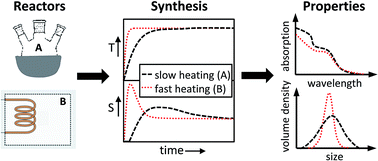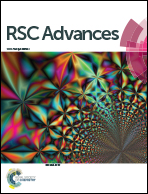Continuous synthesis of CuInS2 quantum dots†
Abstract
In colloidal semiconductor nanocrystal synthesis, many activities have been focused on the control over the mean particle size of the product. However, for device applications additional requirements apply, e.g. the necessity for a narrow particle size distribution (PSD). In the present work, we investigate the impact of reactor characteristics on the synthesis of CuInS2 quantum dots (QDs). Therefore, the synthesis is carried out in three different reactors, namely in a fully scalable and continuous tubular reactor, in a commercial microreactor and in a batch three-neck round-bottom flask. All reaction products from the three reactor types have the same crystal structure and inorganic composition. Slight differences in optical properties are mainly ascribed to differences in the PSD, which is confirmed by sedimentation velocity experiments. Furthermore, the necessity for using different post-processing routines coupled with our findings by analytical ultracentrifugation (AUC) hint at changes in the organic matrix surrounding the CuInS2 QDs. Our study demonstrates the massive impact of heat transfer on the synthesis and the final PSD of CuInS2 QDs synthesized via heating-up and allows us to draw conclusions on their formation.



 Please wait while we load your content...
Please wait while we load your content...